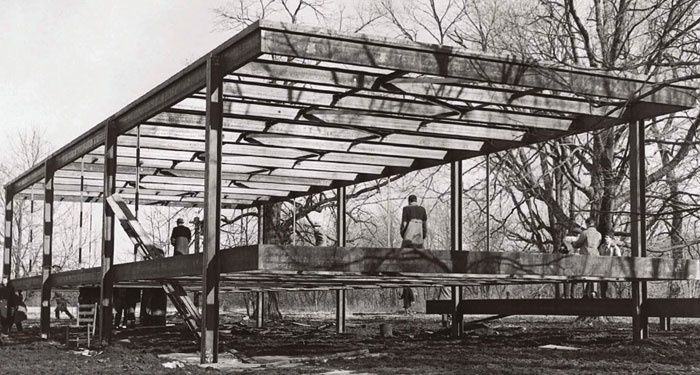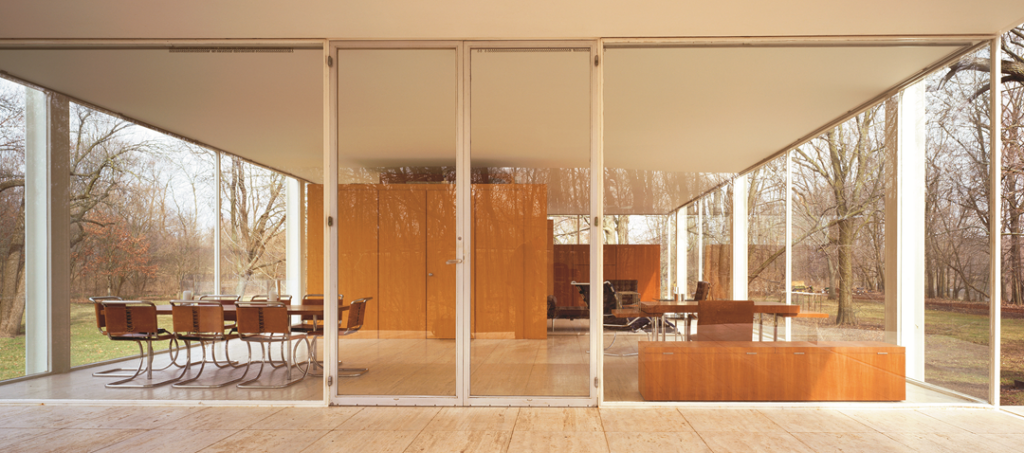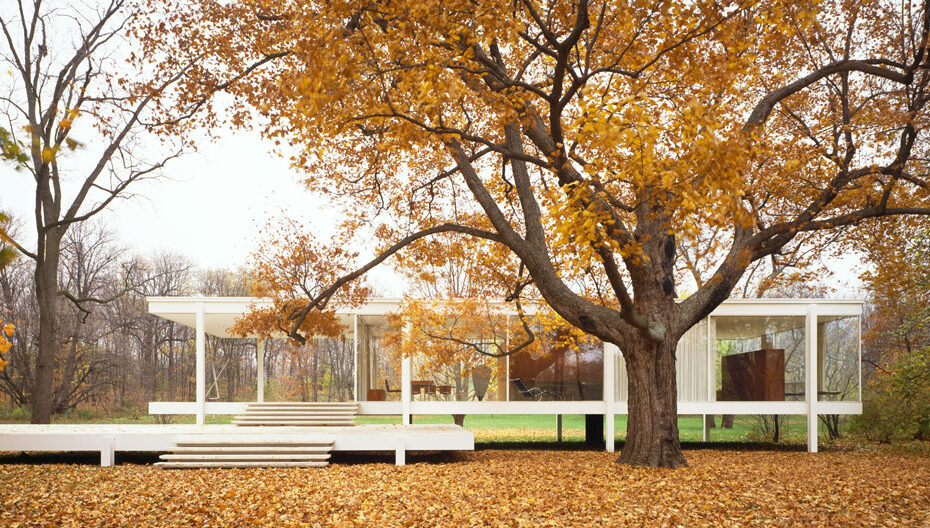In a serene setting where nature and modernity converge, the Farnsworth House stands as a testament to the radical simplicity and elegance of Mies van der Rohe’s vision. Conceived as a response to a post-war yearning for purity in design, this architectural gem embodies the principle of “less is more.” It is not merely a shelter but an ongoing conversation between structure and landscape, form and function.

Commissioned in the early 1950s for Dr. Edith Farnsworth, the house was designed as a weekend retreat—a quiet haven where one could escape the noise of modern life. Mies van der Rohe’s design philosophy is crystallized in this structure: every element is stripped to its essentials, with each material and line serving a deliberate purpose. In Farnsworth House, the architectural language is minimal yet expressive; the building speaks in the silent poetry of steel, glass, and open space.
At first glance, the Farnsworth House captivates with its stark horizontal lines and an abundance of glass. The transparent walls, extending from floor to ceiling, erase the boundaries between the interior and the natural world outside. Mies exploited this interplay of light and transparency to create an environment where natural elements become an intrinsic part of the living experience. Here, the sun’s rays are not confined by opaque walls; they cascade into the interior, shifting the mood of the space as the day unfolds. Every sunrise and sunset transforms the atmosphere, turning the house into a living canvas that responds dynamically to nature’s rhythms.

Structurally, the Farnsworth House is a marvel of modern engineering. Mies’s innovative use of a slender steel frame allowed for vast expanses of glass to be supported with minimal visual interruption. The building’s open plan is a carefully choreographed arrangement of spatial volumes—each area flows effortlessly into the next without the conventional barriers of walls and partitions. This fluidity not only creates a sense of expansiveness but also challenges traditional ideas about the compartmentalization of domestic life. Instead of isolated rooms, there emerges a continuous spatial dialogue that invites occupants to experience the home as a unified whole.
One of the most striking aspects of the design is the way it reconciles industrial materials with natural beauty. The steel framework, with its crisp, unyielding lines, contrasts yet harmonizes with the organic texture of the surrounding landscape. Mies van der Rohe’s meticulous attention to proportion is evident in every detail—the spacing of the columns, the width of the glass panels, and the subtle cantilevers that extend the roofline into the outdoors. These deliberate decisions create an architecture that is both precise and poetic, balancing technical rigor with an almost ethereal quality.

Inside, the Farnsworth House is as much about absence as it is about presence. The minimal furnishings and uncluttered surfaces allow for an unobstructed view of the outside world, reinforcing the idea that architecture should dissolve barriers rather than erect them. The interior is bathed in natural light, which shifts in intensity and hue throughout the day, evoking a sense of timeless calm. Every detail—from the integrated storage solutions to the seamless transitions between the living area and the outdoor terrace—reflects a refined simplicity that has come to define mid-century modern aesthetics.
Beyond its immediate beauty, the Farnsworth House has left an indelible mark on the architectural landscape. It challenged conventional methods of residential design, influencing generations of architects to reconsider the relationship between form and function. In its pure, unadorned expression, the house reveals a deep trust in modern materials and building technologies, while simultaneously paying homage to the natural world. It is a building that not only shelters but also elevates the human spirit, reminding us that simplicity can be profoundly liberating.

Goethe once said that architecture is “frozen music,” and nowhere is this sentiment more vividly expressed than in the Farnsworth House. Here, every steel beam and pane of glass is an instrument in a carefully composed symphony of space and light. It is an enduring icon—a modernist masterpiece that continues to inspire, provoke, and delight those who enter its transparent embrace.
I
